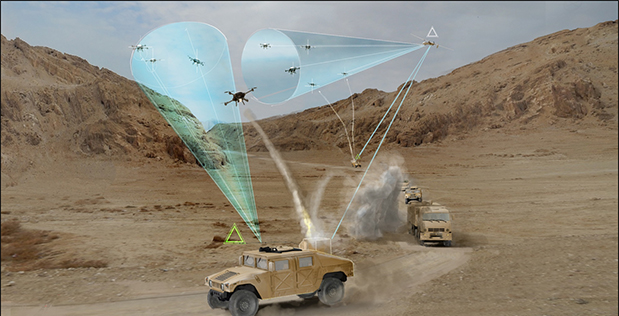The Defense Advanced Research Projects Agency has awarded contracts to three industry teams to develop methods to counter small unmanned aircraft systems.
DARPA announced that teams led by Dynetics, Saab‘s Defense and Security business unit and SRC will develop counter-sUAS approaches under the first phase of the Mobile Force Protection program.
The contracts were awarded one year after the agency posted a request for information on potential systems that can help protect warfighters from sUAS threats.
“Each team will now work to integrate novel ideas for advanced sensors and neutralization approaches into a common framework emphasizing safety for civilian bystanders, ease of operation, and low size, weight, power, and cost,” said Jean-Charles Lede, a program manager at DARPA’s tactical technology office.
“Our goal is a technology demonstration system that could fit onto currently deployed tactical ground vehicles and maritime vessels,” Lede added.
The U.S. Army‘s Maneuver Aviation and Fires Integration Application architecture will serve as the common framework for the teams’ technology approaches and support the creation of a plug-and-play system that can accommodate future sensors and technologies.
DARPA aims to give military services and other government agencies the opportunity to fund field evaluations under MFP and develop a system that would address the needs of U.S. government and commercial users.
The agency expects to deploy a counter-sUAS platform within the next three to four years.
Deltek data indicates phase one contracts are worth $9.6 million combined, while phase two has a $23.5 million overall value and phase three at $30 million total. DARPA is working on the program with all four military service branches, Department of Homeland Security and Coast Guard.
Awardees will conduct open-air demonstrations to simulate how their systems work under a variety of threats and scenarios. DARPA envisions initial functionality of technology demonstration systems at the end of phase one and progression to full-capability on a moving vehicle or vessel by the end of phase three.
After each demonstration, DARPA will give partner agencies a chance to fund extended field evaluations of each system.
Sources: Washington Technology; Executive Biz

